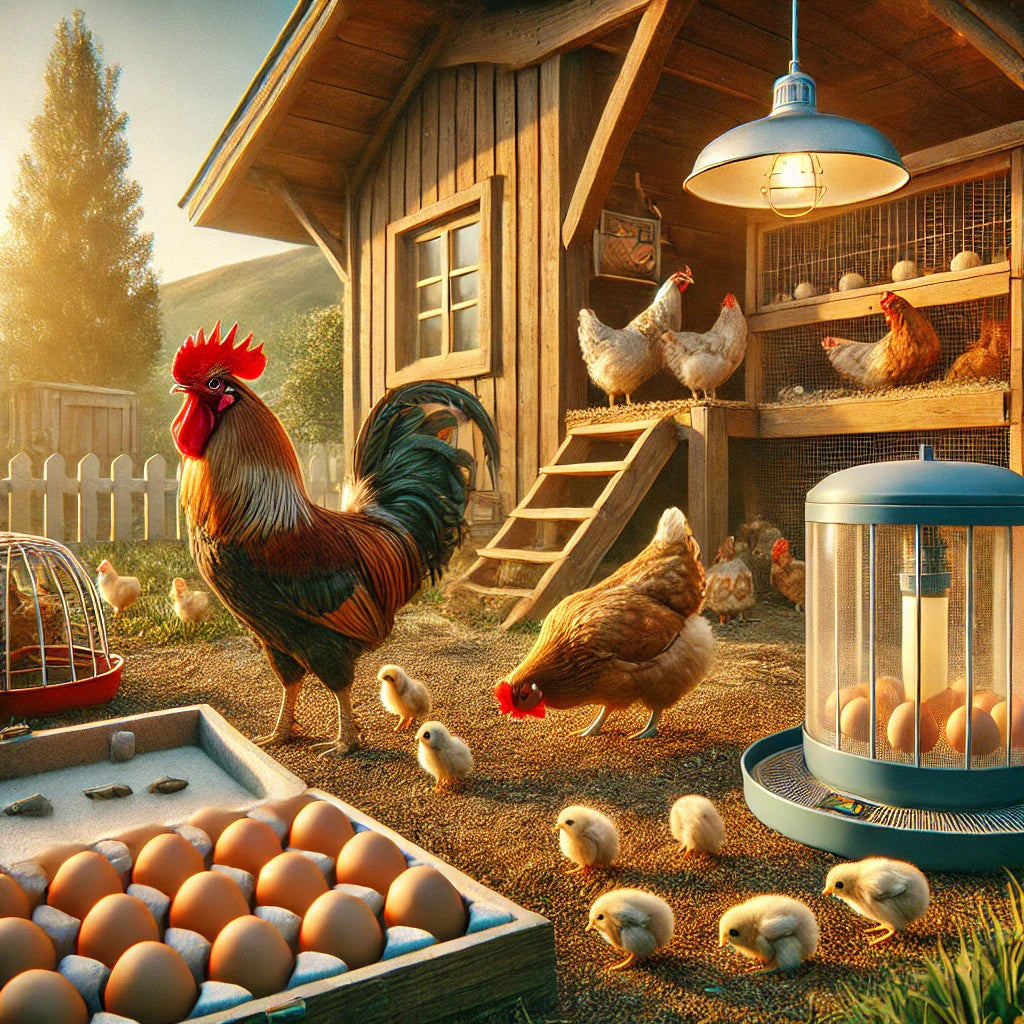Article: The Ultimate Guide to Breeding Backyard Chickens: Tips for a Healthy and Productive Flock

The Ultimate Guide to Breeding Backyard Chickens: Tips for a Healthy and Productive Flock
Breeding backyard chickens can be very rewarding, allowing you to improve egg production, create custom breeds, and maintain a steady supply of replacement birds [1]. This guide shares expert tips for successfully breeding healthy, productive chickens.
Preparing for Breeding Season
- Set up a separate coop and run for breeders
- Select best hens and roosters as foundation stock
- Ensure breeders are healthy and proper weight [2]
- Feed 16-18% protein layer feed to support fertility [3]
Breeding Tips & Techniques
- Maintain 10-12 hens per rooster for optimal fertility [4]
- Collect eggs daily, store pointy end down in cool spot
- Incubate or place under broody within 7 days for best hatch rates [5]
- Candle at day 7 to check development and remove clears [6]
- Incubate at 99.5°F, 50-55% humidity, turn 3x/day [7]
Caring for Chicks
- Brood at 95°F week 1, decrease 5°F weekly [8]
- Provide 24/7 water and chick starter feed
- Offer grit if feed not pre-ground
- Allow outdoor access by 3-4 weeks in protected run
- Switch to grower feed at 8 weeks [9]
Evaluating & Improving
- Track fertility, hatch rates, chick survival
- Cull underperformers from breeding flock
- Select offspring with desired traits for next breeders [10]
- Introduce new genetics every few years for diversity [11]
With dedication, you can breed an outstanding customized backyard flock. Happy breeding!
[1] Ozbey, O. (2005). Production of Quail in Commercial Purpose.
[2] Brillard, J.P. (2003). Managing Breeders for Optimum Fertility.
[3] Leeson, S. et al. (1988). Effect of Diet on Rearing and Breeding Performance.
[4] Wolanski, N.J. (2004). Mating Behaviour and Management of Breeder Flocks.
[5] Fasenko, G.M. (2007). Egg Storage and the Embryo.
[6] Wilson, H.R. (1991). Interrelationships of Egg Size, Chick Size, Posthatching Growth and Hatchability.
[7] Meijerhof, R. (2013). Managing the Incubation Process.
[8] Oguntunji, A.O. (2014). Health and Disease Management in a Breeder Operation.
[9] Ferket, P.R. (1999). Feeding Broiler Breeders.
[10] Bongalhardo, D.C. (2009). Genetic Improvement of Chicken Eggs.
[11] Hicks, J.K. et al. (2015). The Importance of Maintaining Heterozygosity in Breeding Flocks.



Leave a comment
This site is protected by hCaptcha and the hCaptcha Privacy Policy and Terms of Service apply.